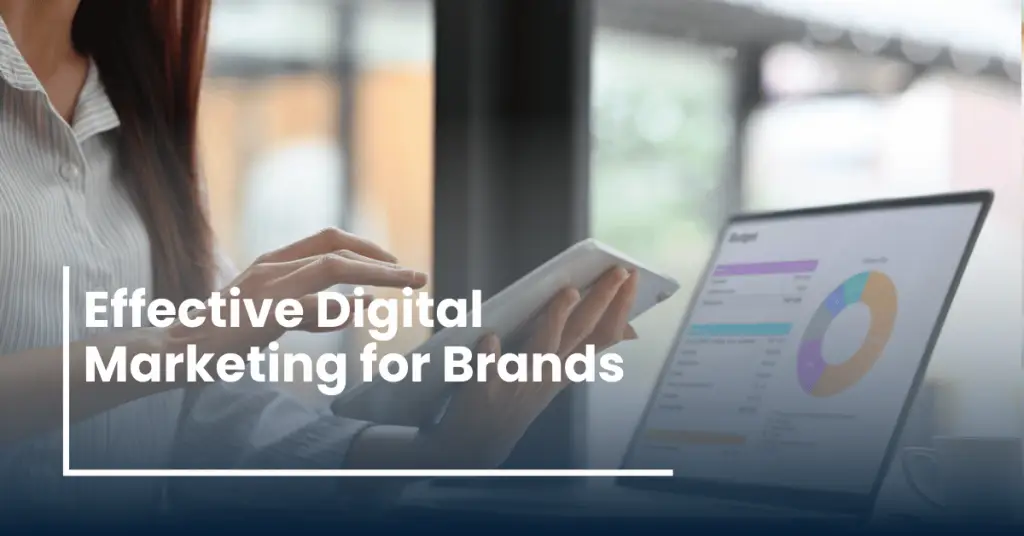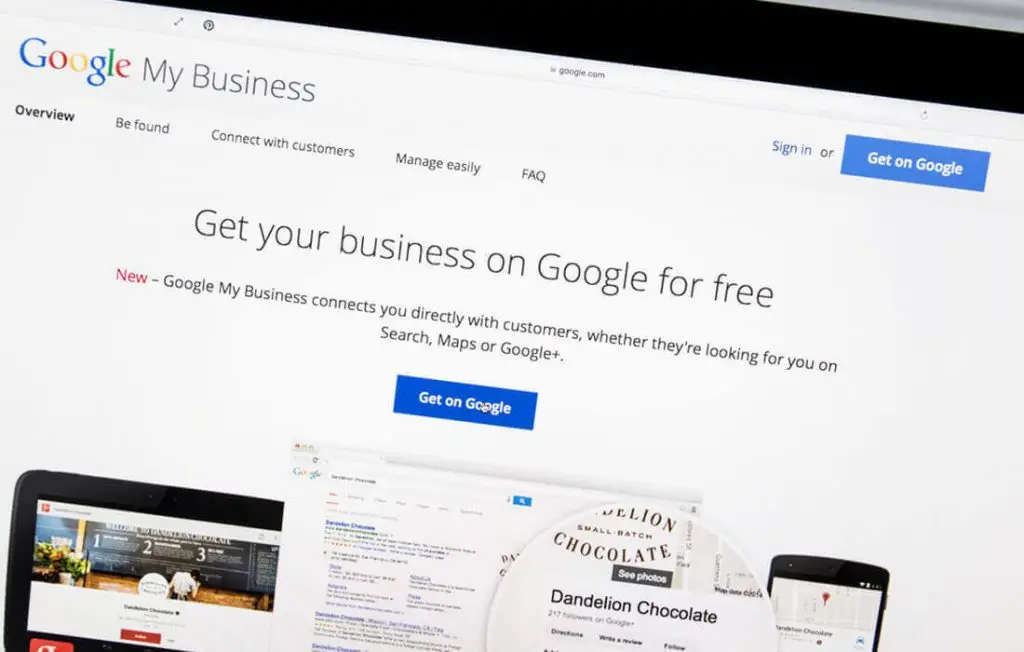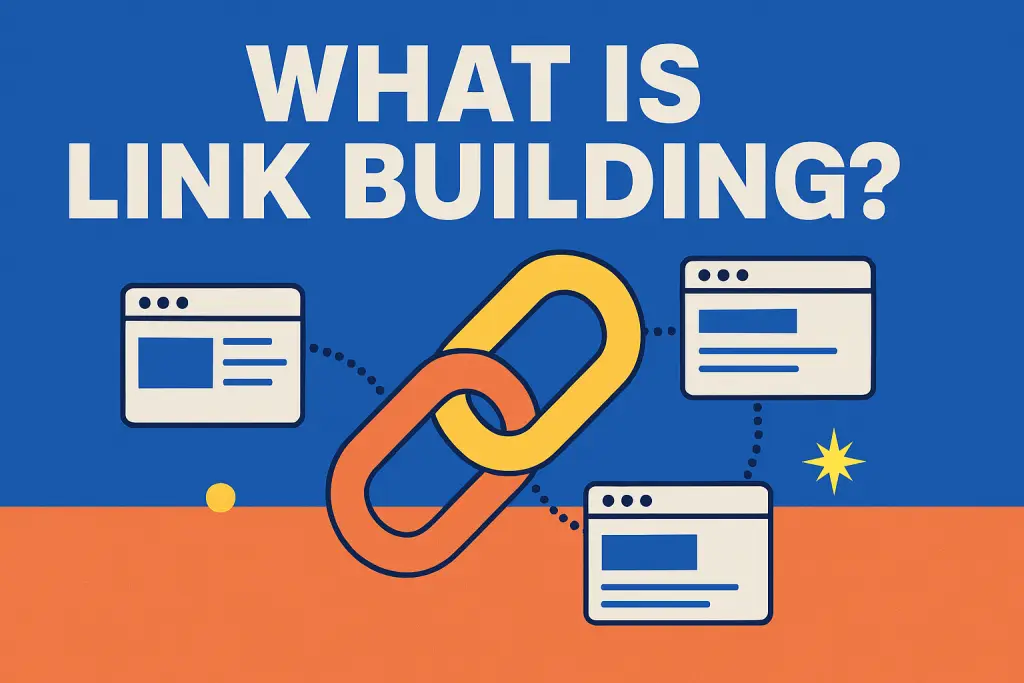Effective Digital Marketing for Brands: Strategies and Examples

Brands looking to thrive online need a solid digital marketing for brands strategy. This article covers essential digital marketing for brands strategies, successful examples, and solutions to common challenges. Learn how to build an effective online presence and connect with your audience in meaningful ways. I. Key Takeaways II. Understanding Digital Marketing for Brands Digital marketing is a concept that utilizes various digital platforms to connect with audiences, providing companies with new ways to reach consumers compared to traditional marketing methods. The rise of the internet has significantly influenced how brands communicate with their audiences, leading to the evolution of digital marketing campaigns. As media consumption habits have changed in the 21st century, marketers have increasingly focused on digital platforms to stay relevant and meet consumer expectations. One of the key differences between digital marketing and traditional advertising is interactivity. Digital marketing allows for real-time engagement with consumers, enabling brands to create more personalized and responsive marketing campaigns. While digital marketing uses many of the same principles as traditional marketing, it comes with its own set of tools and techniques that require a deep understanding of digital channels and consumer behavior. However, digital marketers face several challenges, including the rapid proliferation of digital channels and the constant distractions that consumers face online. Additionally, a digital marketer may find that data analysis can be complex and time-consuming, making it difficult to measure the effectiveness of marketing efforts accurately. Despite these challenges, a company’s website remains the centerpiece of its digital marketing activities, serving as a clear and memorable representation of the brand. III. Key Components of a Successful Digital Marketing Strategy Creating a successful digital marketing strategy starts with setting clear and measurable goals using the SMART framework. These goals and objectives should align with the broader business targets to ensure that marketing efforts contribute to the overall success of the organization. Developing customer personas is also crucial, as it helps brands tailor their strategies to the specific characteristics and needs of their audience. Conducting thorough market research is essential to understand your ideal customer, competitors, and industry expectations. Key performance indicators (KPIs) such as conversion rates, customer acquisition costs, and return on investment help measure the success of marketing strategies. Continuous measurement and adjustment of marketing strategies ensure optimal return on investment and effectiveness, allowing brands to stay agile and responsive to market changes. Data analytics plays a vital role in formulating strategies that improve marketing effectiveness. By blending traditional marketing principles with impactful online strategies, digital marketing involves a comprehensive approach that leverages the strengths of both worlds. According to Statista, content marketing is regarded as the most effective online marketing strategy, with 17,4% of surveyed U.S. companies identifying it as their top-performing channel. IV. Leveraging Social Media Platforms Social media marketing is a form of digital marketing that uses social networks to build brand awareness and engagement. Platforms like Instagram, Facebook, TikTok, Pinterest, and Snapchat are popular choices for social media marketing efforts, each offering unique features and user bases. Collaborating with influencers and other brands allows businesses to attract a wider audience that aligns with their goals. Integrating social media into your overall marketing strategy enhances brand visibility and provides additional opportunities for customer service. Whether through organic posts, paid ads, or influencer partnerships, social media platforms play a crucial role in an effective digital marketing strategy. A. Social Media Marketing Techniques Social media marketing includes various techniques such as promoted posts and tweets, which help brands reach a larger audience quickly. Influencer marketing, where a personality promotes your product or service to their followers, is another powerful technique that can drive significant engagement and conversions. Social media ads are also effective in targeting specific demographics, allowing brands to reach potential customers based on their interests and behaviors. Using engaging visuals and clear calls-to-action can enhance the effectiveness of social media ads, making them more likely to capture the audience’s attention and prompt them to take action. By combining these techniques, brands can create a robust social media marketing strategy that drives results. B. Building Brand Awareness on Social Media Building brand awareness on social media involves utilizing visually appealing content to grab attention and promote brand identity. Encouraging audience participation through polls, questions, and interactive content can also help increase engagement and build a loyal following. By consistently engaging with customers and responding to their queries, brands can foster long-term relationships and enhance customer satisfaction. Maintaining a consistent presence on social media and leveraging each platform’s unique features helps drive brand awareness and visibility. V. Content Marketing Strategies for Brands The primary goal of content marketing is to reach potential customers through engaging content that resonates with their interests and needs. Content marketing requires careful planning and collaboration to deliver material that captivates the target audience. Understanding your audience’s preferences and desires allows for the creation of content that converts and builds brand loyalty. Effective content marketing includes various types of content such as blogs, videos, infographics, reports, and guides. Social media enhances brand visibility by enabling businesses to reach larger audiences through engaging content, while augmented reality (AR) technology offers interactive experiences that enhance customer engagement and product visualization. A. Creating Engaging Content Creating engaging content involves producing high-quality visuals and sound, which are crucial for maintaining viewer interest and ensuring a professional appearance. Tutorials and explainer videos serve to educate viewers, making complex products or services easier to understand. Incorporating subtitles can enhance accessibility and help retain viewers watching videos in silent mode. Focusing on delivering valuable and relevant content helps brands effectively engage their audience and drive conversions. B. Distributing Content Across Channels Choosing the right digital channels is crucial for maximizing the reach of your content. Knowing where your audience spends time online helps guide effective content distribution, ensuring that your material reaches the right people. Running targeted experiments can help refine your content strategy based on performance metrics, allowing for continuous improvement. By strategically distributing content across multiple channels, brands
How Small Businesses Can Benefit From SEO?

“SEO is dead.” Have you heard that before? Spoiler alert: it’s not true. In fact, SEO is more alive—and necessary—than ever for small businesses. With 68% of all online experiences starting with a search engine (thank you, Google), businesses that don’t prioritize SEO are effectively invisible to their target audience. In this updated guide, we’ll explore why SEO continues to be a game-changer for small businesses and how modern strategies can help you stay competitive in today’s digital landscape. The Benefits of SEO for Small Businesses in 2025 1. Be Where Your Customers Are: Online and Searching Today’s customers expect to find businesses quickly and easily online. SEO ensures your website appears prominently in search results when people are looking for your products or services. 2. Build Trust and Credibility Appearing on the first page of Google isn’t just about visibility—it’s about trust. Users inherently trust top-ranking sites more than those buried on page two (or beyond). 3. Outshine the Competition Did you know that 90% of small businesses don’t have a solid SEO strategy? That’s your opportunity to shine. By investing in SEO, you can outperform competitors who rely solely on outdated methods or paid ads. 4. Attract More Qualified Traffic SEO brings targeted traffic—people who are actively searching for what you offer. These visitors are more likely to convert into customers compared to random social media scrollers. 5. Provide a Better User Experience SEO is about more than keywords. Modern strategies prioritize user experience (UX), ensuring your site is fast, mobile-friendly, and easy to navigate. 6. Stay Relevant in a Changing Landscape The SEO world moves fast. Algorithm updates, AI advancements, and changing user behavior mean that strategies need constant fine-tuning. Regular SEO efforts ensure your site adapts and thrives. 7. Get Long-Term Results on a Budget Unlike PPC campaigns, where results disappear the moment you stop paying, SEO provides sustainable growth over time. It’s an investment that keeps paying dividends. 2025 SEO Strategies for Small Businesses Here’s what’s working now for small businesses: Read our Complete SEO – Search Engine Optimization guide Conclusion: Small Businesses + SEO = Big Wins SEO isn’t just for the tech-savvy or enterprise-level businesses—it’s for everyone. For small businesses, it’s the bridge between you and your customers. By adapting to modern trends and maintaining a consistent strategy, you can build trust, attract more leads, and grow sustainably. Your Next Step: Ready to take your SEO game to the next level? Contact our SEO agency in Bangkok for a personalized strategy tailored to your business goals.
11 Proven Ways to Get More Inquiries from Your Website in 2025

So how do you generate more inquiries from your website?You do it by optimizing every stage of the user journey—from the first click to the final form submission. This guide walks you through 11 proven tactics used by high-performing websites to engage visitors, earn trust, and convert traffic into leads. Why Website Inquiries Matter Let’s be honest—if your website isn’t generating inquiries, it’s not doing its job. A lot of businesses obsess over traffic: “We need more visitors!” But more traffic without conversion? That’s just noise. It’s like throwing a party, inviting 1,000 people, and no one speaks to the host. The real win? Getting visitors to talk to you—to ask questions, to show interest, to raise their hands and say, “Hey, I might want what you’re offering.” Inquiries Aren’t Just Questions—They’re Buying Signals When someone submits a form, starts a chat, or calls your team, they’re doing more than asking a question. They’re signaling intent. They’ve gone past passive scrolling and into the realm of maybe, possibly, probably interested. In other words: they’re at the consideration stage of the funnel. That’s where sales conversations begin. And here’s the kicker—every inquiry is a lead. A chance to start a relationship. A trigger for your sales process. The more inquiries you receive, the more opportunities you have to build trust, demonstrate value, and win business. Want to improve your website’s performance? Start by increasing the number of meaningful conversations it initiates. Inquiries Are Your Best Market Research (That You’re Probably Ignoring) Another benefit? Inquiries are a goldmine of insights. People tell you exactly what they want, what confuses them, what’s holding them back. You’ll learn more from 50 genuine inquiries than from 5,000 Google Analytics sessions. And yes—tools and dashboards are great. But conversations? Conversations convert. TL;DR Takeaway Don’t treat inquiries as an afterthought. They’re the clearest indicator of whether your website is working as a business asset—not just a digital brochure. And if you’re not optimizing for them, you’re letting valuable leads slip through the cracks. Tactic 1: Optimize UX & UI for Lead Generation Let me guess—your website looks “pretty good.”But is it useful? Designing for aesthetics and designing for inquiry generation are two very different things. If your website’s user experience (UX) and interface (UI) are confusing, slow, or clunky, it doesn’t matter how many CTAs you throw at people—they’ll bounce. Good UX isn’t a nice-to-have. It’s the path of least resistance between “visitor” and “inquiry.” Here’s What High-Converting Websites Get Right: 1. Fast Load Times Milliseconds matter. A 1-second delay can reduce conversions by up to 7% (source: Akamai). Use tools like Google PageSpeed Insights or GTmetrix to check load times and optimize image sizes, lazy-load videos, and compress code. Yes, even that beautiful full-screen background video could be tanking your conversions. 2. Clear Navigation If users can’t find what they’re looking for in 5 seconds, they’re gone. Use intuitive labels (“Pricing,” “About,” “Get a Quote”) and logical menu structures. Remove jargon. Breadcrumbs, sticky headers, and even a “Back to Top” button can reduce friction. 3. Mobile Responsiveness This isn’t 2015 anymore. Over 60% of site visits now come from mobile. If your form overlaps the footer on an iPhone, that’s a deal-breaker. Every element should scale seamlessly across devices—especially CTA buttons and contact forms. 4. Readable Content Designers love thin, grey fonts on white backgrounds. Your visitors do not.Use strong contrast, short paragraphs, clear headings, and enough whitespace to give the content breathing room. People skim before they commit—make skimming easy. 5. Strategic CTA Placement Place your inquiry triggers (buttons, forms, chat) where your visitors expect them: Put simply: make it easier to say “yes” than to click away. Pro Tip:Use tools like Hotjar or Microsoft Clarity to visualize where people click, scroll, and rage-quit. That insight is UX gold—and it’s free. Tactic 2: Craft Strong, Action-Oriented CTAs That Actually Convert Here’s the brutal truth: most website CTAs are either invisible, uninspiring, or so vague they may as well not exist. A button that says “Submit” is not a call to action. It’s a call to boredom. If you want more inquiries, your calls to action need to do more than just sit there. They need to compel. They need to guide. And most of all, they need to convert. Why CTAs Matter So Much Visitors are distracted. They scan pages in seconds. If you’re not making it clear what they should do next—and why—it’s game over. A well-crafted CTA turns curiosity into action. It answers the silent question every visitor is asking:“What’s in it for me if I click this?” How to Create CTAs That Drive Inquiries 1. Clarity beats clevernessThis isn’t the place to be poetic. “Let’s Talk” outperforms “Begin Your Transformation.” Tell the user exactly what will happen: 2. Highlight value, not just actionMake the benefit of clicking obvious. For example: 3. Use contrasting designYour CTA should stand out visually. High-contrast colors, whitespace, and proximity to important content matter. If everything is bold, nothing is bold. Make the CTA a visual anchor. 4. Add urgency or incentive (without gimmicks)Phrases like “Limited Slots Available” or “Responses Within 24 Hours” create gentle urgency, especially for service-based businesses. But skip fake countdowns—users are smarter than that. 5. Test more than just textPosition, shape, and even microcopy around your CTA can impact conversion rates. A/B test different variations to see what resonates with your audience. A strong CTA is like a handshake at the end of a good conversation—it invites the next step. If your website isn’t making that invitation clear, you’re losing inquiries every day. Tactic 3: Use Live Chat and Chatbots to Capture High-Intent Visitors Here’s a quick experiment you can run:Visit your own website.Now pretend you’re a potential customer with a question. If you’re relying on a “Contact Us” form alone, you’re leaving a massive number of leads on the table. People don’t want to wait. They want answers now. That’s why live chat and chatbots are no longer nice-to-haves. They’re essential.
Top 7 PR News Websites in Thailand

What are the benefits of news websites in Thailand? Top news websites in Thailand can be an effective way to promote a business by increasing brand visibility, building credibility, and reaching a wider audience. Some of the benefits of using top news PR websites in Thailand to promote a business are: In summary, using top news websites in Thailand can be an effective way for businesses to promote themselves by gaining visibility, building credibility, reaching a targeted audience, improving their SEO, and doing so in a cost-effective way. Here are the top 7 best PR news websites in Thailand to advertise your website: 1. Khaosod News Khaosod is a Thai news outlet and online newspaper. It stands for “Khaosod English,” which means “breaking news” in Thai. It was founded in 2013 and provides news and information on current events and politics in Thailand and Southeast Asia. Visit the Thai versionVisit the English version Metrics: 2. Matichon Online Founded in 1987, Matichon is a Thai-language newspaper that is published in Bangkok, Thailand. It is one of the largest newspapers in Thailand and covers a wide range of topics, including politics, business, entertainment, and sports. Visit Matichon Online website: https://www.matichon.co.th/ 3. Prachachat News Prachachat News is a Thai-language news website that covers various topics, including politics, economics, society, culture, and sports. The website was launched in 2002 and has since become one of the leading news sources in Thailand. Prachachat News aims to provide accurate, balanced, and in-depth coverage of local and international news. In addition to its online platform, Prachachat News also publishes a daily newspaper, which is available in both print and digital formats. The website is known for its critical and independent reporting, and its editorial stance is generally considered to be progressive and socially conscious. Metrics: Visit the website: https://www.prachachat.net/ 4. Technologychaoban.com Technologychaoban.com is a Thai-language technology news and reviews website. It covers a wide range of topics related to technology, including smartphones, laptops, gaming, gadgets, and software. The website publishes news articles, reviews, and how-to guides that aim to inform and educate its readers about the latest developments in the technology industry. Technologychaoban.com is known for its straightforward and easy-to-understand content, which makes it accessible to readers with varying levels of technical expertise. It also has a strong presence on social media platforms, where it shares news and updates with its followers. Overall, Technologychaoban.com is a popular source of information and reviews for technology enthusiasts and consumers in Thailand. Metrics: Visit the website: https://www.technologychaoban.com/ 5. Sentangsedtee.com Sentangsedtee.com is a Thai-language lifestyle and entertainment website that covers various topics such as travel, food, fashion, beauty, health, and horoscope. It features articles, videos, and photo galleries that provide information, tips, and inspiration for its readers. The website also has a section for news and current events, as well as a community section where readers can interact with each other and share their own stories and experiences. Overall, Sentangsedtee.com is a popular website in Thailand that caters to readers who are interested in lifestyle and entertainment content. Metrics: Visit the website: https://www.sentangsedtee.com/home 6. Silpa Mag Silpa Mag is a Thai-language online magazine that focuses on art, culture, and lifestyle. The website features articles, interviews, reviews, and news related to various forms of art, including visual arts, music, literature, theater, and film. It also covers topics related to culture and lifestyle, such as food, travel, fashion, and design. Silpa Mag aims to promote Thai artists and their works and to provide a platform for discussion and reflection on contemporary art and culture. The website is known for its in-depth and thoughtful content and has a large following among art and culture enthusiasts in Thailand. Metrics: 7. Matichon Weekly Matichon Weekly is a Thai-language weekly news magazine published by Matichon Group, one of the leading media companies in Thailand. The magazine covers various topics, including politics, economics, society, culture, and entertainment. It features in-depth reporting, investigative journalism, and analysis on current events, as well as human interest stories, interviews, and opinion pieces. Matichon Weekly aims to provide a balanced and independent perspective on the news and events in Thailand and around the world. The magazine is known for its high-quality journalism and has won numerous awards for its reporting over the years. Metrics: Visit the website: https://www.matichonweekly.com/ Want to be featured on the top news websites in Thailand? Ready to amplify your brand’s presence and drive measurable results? At Inspira Digital PR Agency, we connect your business with Thailand’s top media outlets, boost your online visibility, and build trust that lasts.
How to Optimize Google Business Profile: A Comprehensive Guide

In the digital age, having an online presence is not just beneficial, but crucial for businesses. One platform that often gets overlooked is Google Business Profile. This free tool from Google allows businesses to manage their online presence across the search engine and its growing portfolio of utilities – offering the greatest impact for businesses seeking local exposure. An optimized Google Business Profile (former Google My Business – GMB) profile can be a powerful marketing tool for your business. This guide will walk you through the steps to optimize Google Business Profile and leverage this service to grow and enhance your business. Understanding Google Business Profile What is Google Business Profile? Google Business Profile is a free and easy-to-use tool for businesses and organizations to manage their online presence across Google, including Search and Maps. By verifying and editing your business information, you can help customers find you and tell them the story of your business. It’s a one-stop-shop for businesses to manage their Google-related online presence, which is especially important considering that Google is the world’s most popular search engine, processing over 3.5 billion searches per day. Why is Google Business Profile important for businesses? Google Business Profile is crucial for local SEO as it enables your business listing to appear in local search results for queries specific to your products or services. Even broad queries with large volumes display local results in the three-pack, and this is something small business owners can capitalize on. When a potential customer is searching for a product or service, Google uses their geolocation to show the nearest options. If your business is optimized for Google Business Profile, you’ll have a higher chance of showing up in these results, which can significantly increase your visibility and bring more customers through your doors. Setting Up Google Business Profile How to create a Google Business Profile account? Creating a Google Business Profile account is the first step to get your business on Google. Here’s how: This process is straightforward and only takes a few minutes. However, it’s crucial to ensure that all the information you provide is accurate and up-to-date. Verifying your business on Google Business Profile After creating your account, you’ll need to verify your business. This can be done in several ways, including by postcard, phone, email, or instant verification. Choose the method that’s best for you, and follow the prompts to complete the verification process. Verification is an important step because it proves to Google that your business is legitimate and that you are the rightful owner. Once your business is verified, you’ll have full control over your business profile and can start optimizing it for better visibility. Optimizing Your Google Business Profile Choosing the right business category Choosing the right business category is crucial as it helps Google decide which searches your local listing belongs in. You must choose from the list of available categories, as you can’t create your own. However, if you can’t find a category that fits your business, choose a general one that still describes your business accurately. For instance, if you run a vegan bakery, but there’s no “Vegan Bakery” category, you might choose “Bakery” or “Health Food Store” instead. The category you choose will help Google understand what your business does, which can influence the search terms you appear for. Adding a compelling business description Your business description should accurately represent your business and entice users to click on your listing. It should include your services, local areas you serve, and any other information that helps users understand your business. Remember to keep it concise and easy to read. For example, if you run a vegan bakery, your description might read something like this: “At Beyond Bread we’re passionate about creating delicious, cruelty-free baked goods. Located in Bangkok, we serve a variety of vegan treats, from classic pastries to innovative new flavors. Come visit us to taste the difference for yourself!” Uploading high-quality photos Photos help people find your business across Google, including on Search and Maps. They can also give people a better sense of what to expect from your business. Make sure to upload high-quality photos that represent your business well. You might include photos of your storefront, so people know what to look for when they visit. You could also include photos of your products or services in action, as well as photos of your team. These images can help potential customers feel more connected to your business. Adding your business operating hours Make sure to add your business hours to your Google My Business profile. This information helps users know when you’re open and gives them confidence that when they travel to your location, it will be open. If your hours change for holidays or other special events, remember to update them on your Google Business Profile. This can help prevent frustration and ensure a good customer experience. Managing and Responding to Reviews The importance of reviews on Google My Business Reviews on your Google My Business profile can be a powerful way to show potential customers that you’re trustworthy and reliable. They can also help you rank higher in search results. According to a study by Moz, online reviews are thought to make up 10% of how Google and other search engines decide to rank search results. Encourage your customers to leave reviews, and make it easy for them by providing a link to your Google Business Profile review page. You could also consider offering incentives for reviews, such as a discount on their next purchase. How to respond to positive and negative reviews? Responding to reviews shows that you value your customers and their feedback. Positive reviews are easy to respond to: thank the customer for their support and provide a thoughtful response. For example, “Thank you for your kind words, [Customer’s Name]! We’re thrilled to hear you enjoyed [specific detail they mentioned]. We look forward to serving you again soon!” Negative reviews can be more challenging, but
What is Link Building?

Imagine you have a fantastic website for your business – whether it’s a SaaS startup, a real estate agency, or an international school – but it’s a bit like a great party with no guests. How do you get people (and Google) to notice it? This is where link building comes into play. In plain terms, link building is about getting other websites to vouch for yours by linking to it. It’s one of the most important parts of off-page SEO and can make the difference between a website that’s a wallflower and one that’s the star of the show. What is Link Building? (Definition) Link building is the process of acquiring hyperlinks from other websites to your own website. These hyperlinks from external sites are often called backlinks. Think of each backlink as a little endorsement or recommendation for your site. When reputable sites link to yours, it’s like they’re telling search engines, “Hey, this site is worth checking out!” Since these links come from outside your own website, link building is known as an off-page SEO strategy as opposed to on-page SEO changes you make on your site). In short, it’s digital word-of-mouth: you’re building your site’s reputation by having others talk about (and link to) it. Why Link Building Matters for SEO Link building isn’t just a fancy SEO term – it’s a core factor in how well your site ranks on search engines. In fact, backlinks remain one of the top factors that Google’s algorithm looks at when deciding where to place your page in the search results. Each quality backlink acts like a vote of confidence for your website, boosting your site’s credibility and authority in Google’s eyes. The more authoritative and relevant sites that link to you, the more likely you are to climb those SEO rankings and appear on the coveted first page of search results. It’s no wonder that 95% of businesses are prioritizing link building as part of their SEO strategy in 2025 and beyond. A strong backlink profile can significantly improve your domain authority (a measure of your site’s trustworthiness) which in turn helps increase organic traffic. Plus, backlinks aren’t just for search engines – they can bring direct referral traffic too. A well-placed link on a popular site can funnel actual visitors to your page, potentially leading to new customers or inquiries. That said, it’s not simply about racking up a high volume of links. Quality trumps quantity. Search engines value backlinks from credible, relevant websites far more than links from shady or unrelated sites. (One great backlink from a respected industry blog will beat ten links from sketchy, spammy sites.) In fact, low-quality link schemes can do more harm than good, so it’s wise to focus on genuine, high-quality links for long-term success. Now, how can you go about building those quality backlinks? Let’s look at some practical examples and strategies. Link Building in Practice: Examples To make link building less abstract, here are a few real-world examples of how it works for different businesses: In each of these examples, another website is effectively saying “This business is worth checking out,” by linking to it. Over time, these links build up your site’s reputation and visibility online. Common & Effective Link Building Strategies So, how do you actively build and earn these valuable backlinks? Here are some common and effective link building strategies (that even beginners can use): Each of these strategies helps you build your backlink profile in a legitimate way. Remember, consistency is key – link building is an ongoing process, more of a marathon than a sprint. Over time, these efforts compound, and you’ll see your site’s authority and SEO rankings grow. Ready to Boost Your SEO Rankings? Link building may sound technical, but at its heart it’s about relationships and reputation. By now, you know the essentials of what link building is, why it matters, and how to start doing it. With a friendly, consistent approach, even a B2B business in SaaS, real estate, or education can earn great backlinks and climb the search results. If all this still feels a bit overwhelming or you’d like some expert guidance, we’re here to help. Contact our SEO company in Bangkok for a friendly chat about boosting your website’s authority. We’ll help you craft a smart link building strategy that elevates your off-page SEO and drives real results – higher rankings, more traffic, and more business. Let’s build those links and get your site the recognition it deserves!
